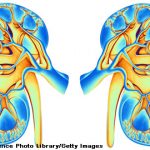Inflammation associated with rheumatoid arthritis (RA) leads to both local and systemic bone damage. A new study has examined this process more closely and revealed that arthritis induces early high bone turnover, structural degradation, mineral loss and mechanical weakness.
Bruno Vidal, a graduate student at the University of Lisbon in Portugal, and colleagues recently published results from their rat study in PLoS One.1 The investigators used the Wistar adjuvant-induced arthritis (AIA) model to evaluate the effects of inflammation on bone microstructure.
The group has previously reported that longstanding inflammation in the chronic SKG mouse model of arthritis leads to high collagen bone turnover and disorganization of the collagen network. They also documented disturbed bone microstructure and degradation of bone biomechanical properties. Likewise, they found a decrease in bone stiffness, ductility and strength in SKG mice, which paralleled the high collagen bone turnover and disorganization.
The current study builds on this work by focusing on the early effects of the inflammatory process on the microarchitecture and mechanical properties of bone. The investigators quantified two biochemical markers of bone turnover: carboxy-terminal collagen cross-linking telopeptides (CTX-I) and amino-terminal propeptide (PINP). CTX-I is a bone resorption marker that reflects osteoclastic activity. PINP is a bone formation marker that reflects osteoblastic activity. The team used energy dispersive X-ray spectroscopy to quantify calcium and phosphorous, two major minerals present in bone. They chose calcium, in particular, because it is reported to be the most important nutrient associated with peak bone mass. Calcium is also the only nutrient that is linked via epidemiological studies to bone-fracture rate.
The investigators began by validating the kinetics of disease development in the AIA rat model. They documented initial acute inflammation that began at approximately day 4 and continued for 22 days post-disease induction. They found that AIA rats had increased bone turnover that was paralleled by decreased mineral content.
They used histomorphometry to measure bone microstructure via three parameters: bone trabecular volume, trabecular thickness and trabecular separation. At 22 days post-disease induction, arthritic rats had a lower trabecular thickness and bone volume, and a higher trabecular separation than control rats. Bone mechanical tests were used to measure yield stress and ultimate stress. Yield stress is a measure of the moment of occurrence of first microfractures; ultimate stress is a measure of the moment of occurrence of complete fracture. The investigators found lower yield stress and ultimate stress in the arthritic group compared with the control. The results suggest that femurs from arthritic rats are more fragile and prone to stress than control femurs. The authors conclude that AIA is an appropriate model for studying the effects of arthritis on bone properties. (posted 2/27/15)

